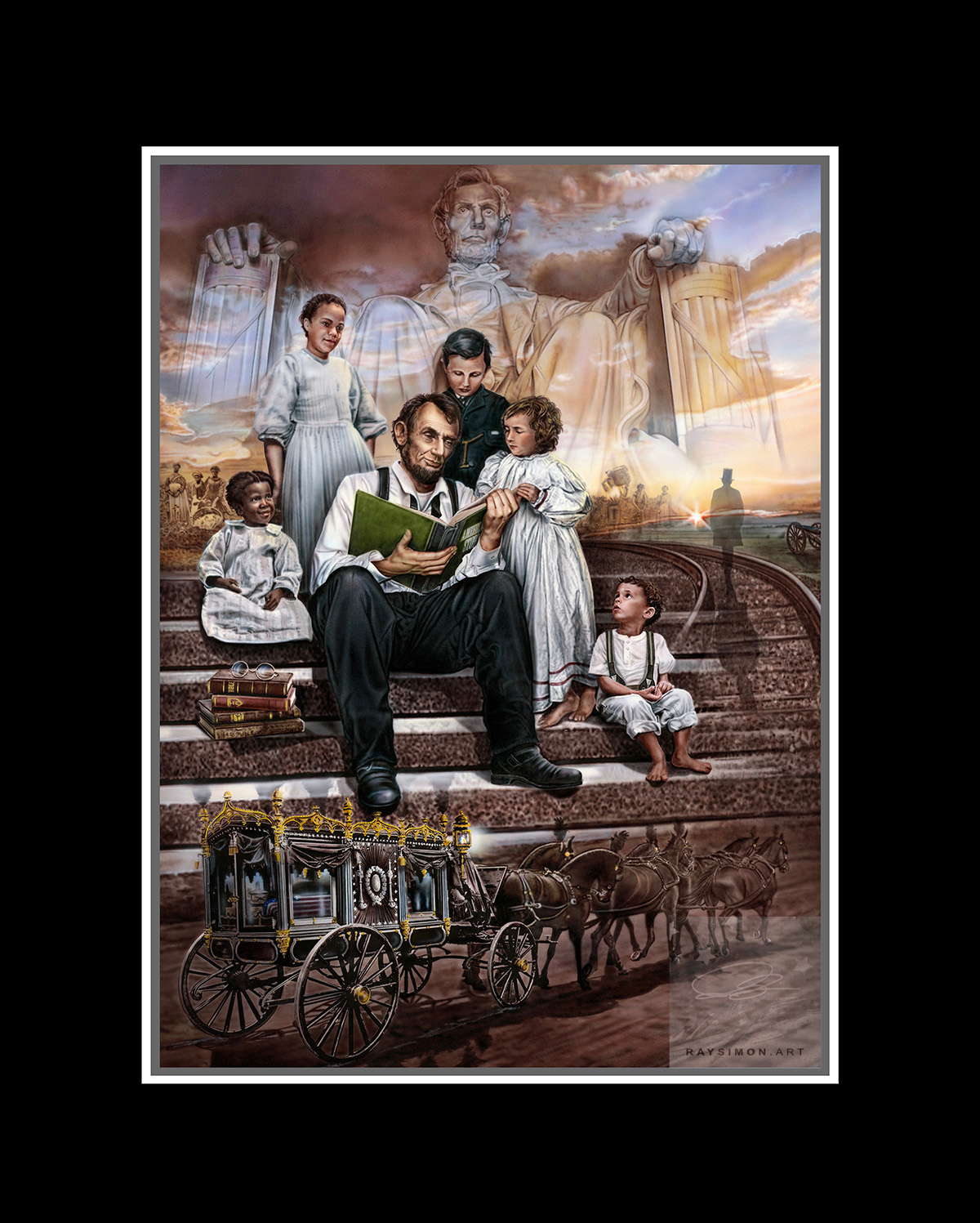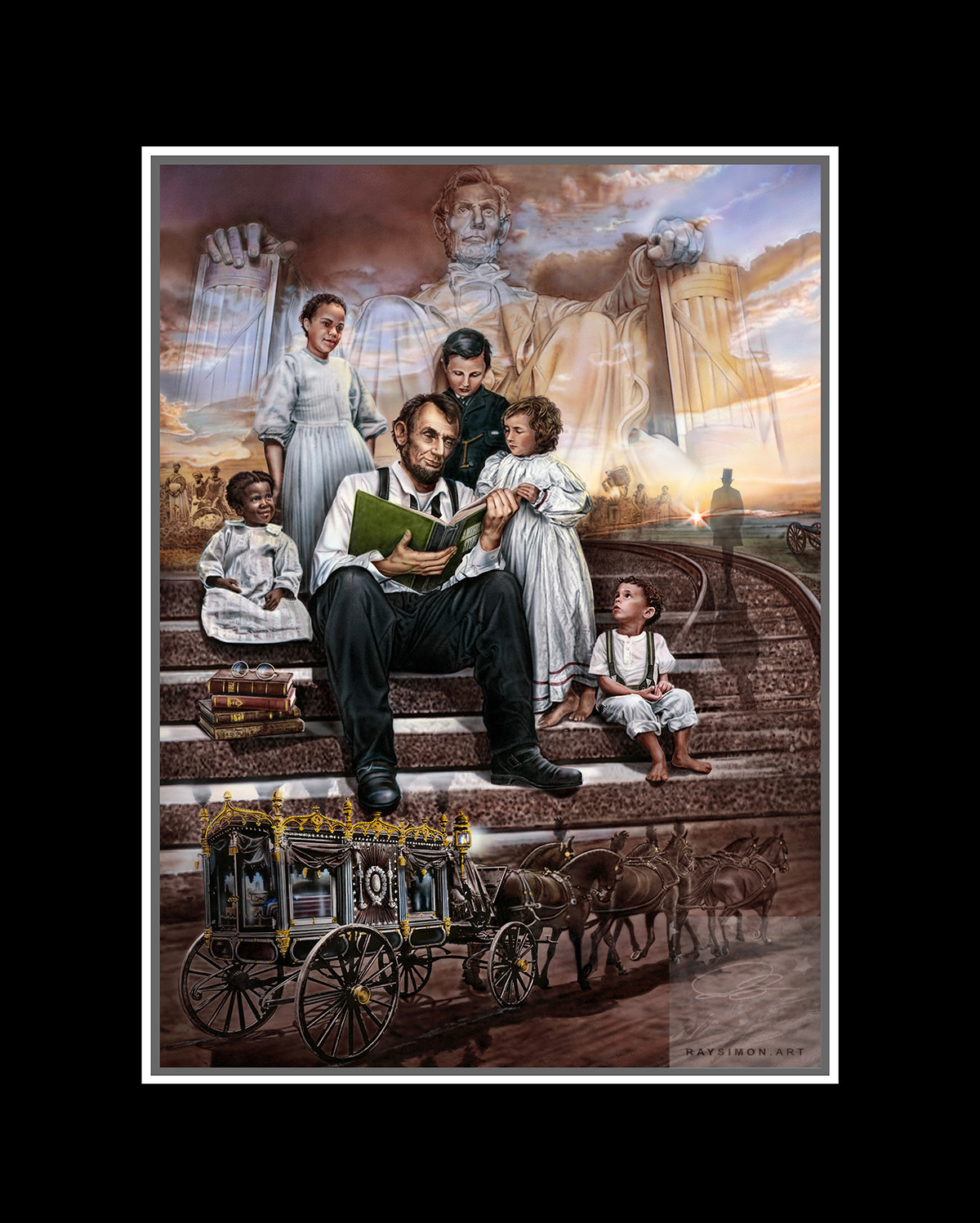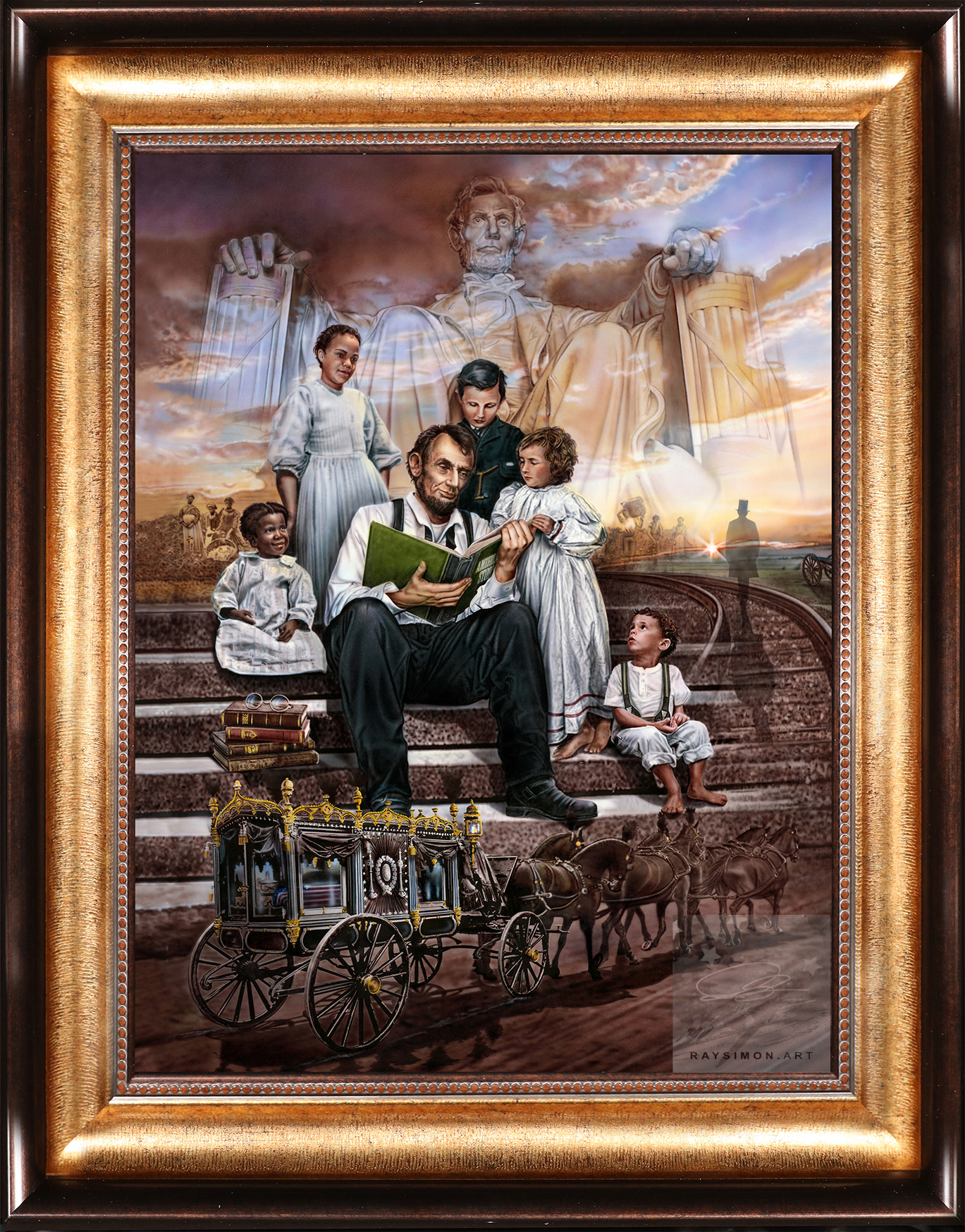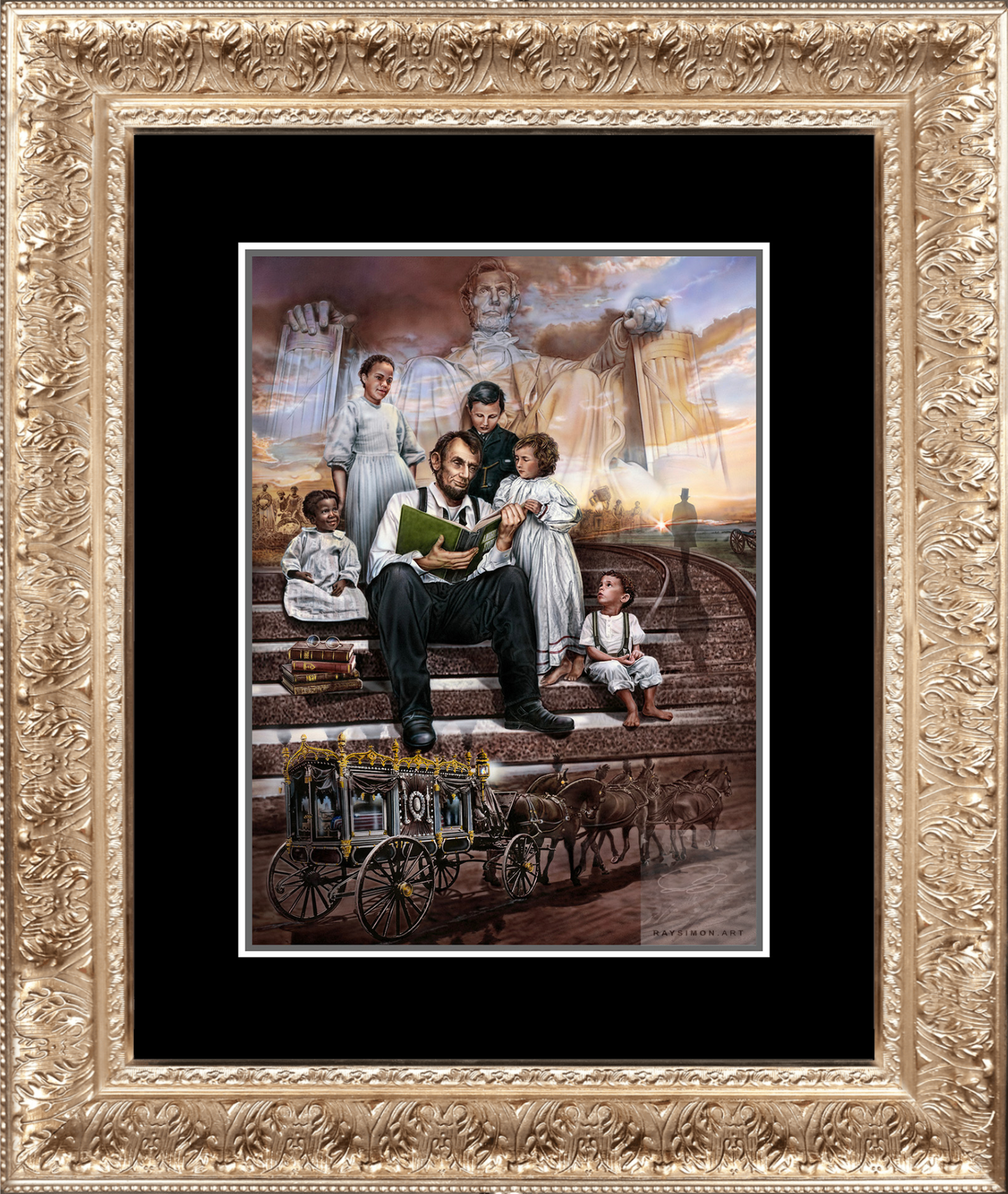America's Story - Abraham Lincoln
Let Us Tell You a Story
In this piece we see President Abraham Lincoln reading to a group of children. He is reading from a book titled Americas Story. This painting depicts one of the main goals of Ray Simon Art, telling people the history of America through visually stunning art. It is more important now than ever to show people the true history of America and that is okay to be proud of our history. Continue reading below to get the full story behind the painting "America's Story."
Artist Raymond A. Simon is honored to create a commemorative portrait that captures the spirit and legacy of Abraham Lincoln, our 16th president and the author of pivotal changes within our nation’s history.
Following the immutable values declared by our forefathers in the United States Constitution, Lincoln remained steadfast in the belief that "we hold these truths to be self-evident, that all men are created equal, that they are endowed by their Creator with certain unalienable Rights, that among these are Life, Liberty and the pursuit of Happiness."
Lincoln held this vision as sacred. Aiming to end the treatment of slaves as inhuman property, he implemented the 13th Amendment to the Constitution, which declared that "neither slavery nor involuntary servitude, except as a punishment for crime whereof the party shall have been duly convicted, shall exist within the United States, or any place subject to their jurisdiction."
Passed by Congress on January 31, 1865, and ratified by the states on December 6, 1865, the 13th
Amendment formally abolished slavery in the United States, It would also raise awareness of wider civil rights, including for women and other minorities. In 1868, the 14th Amendment defined national citizenship and forbid the states from restricting the basic rights of citizens or other persons. In 1870, the 15th Amendment prohibited the federal and state governments from denying citizens the right to vote based on their race, color or former servitude. In 1920, the 19th Amendment prohibited any U.S. citizen from being denied the right to vote based on their sex.
Because of what the 13th Amendment set in motion, people can believe in a world of equals who live according to their unalienable rights and overcome, that which might interfere with freedom and acceptance for all civil liberties.
Simon’s portrait expresses the facets of Lincoln that poised him by Providence to alter the course of America. At front and center is Lincoln sitting on the steps of the Lincoln Memorial reading to multiracial children; his son Tad is among them. The tallest child is biracial, representing how far we have come, more importantly how far we have to go.
Prior to his Presidency Lincoln would read stories to children with an array of books, including The Bible.
Members of Lincoln’s Presidential Guard, commented on seeing Lincoln read the bible one evening at the Cottage.
Upon being questioned, Lincoln replied, “take all of this book upon reason that you can, and the balance on faith, and you will live and die a happier and better man.”
The book he reads is a conceptual one titled America’s Story to which he contributed vital pages. It represents the essence of the 13th Amendment and the courageous efforts of those who would embody its principles, such as Ruby Bridges, Rosa Parks, Susan B. Anthony, Elizabeth Cady Stanton and Dr. Martin Luther King.
Just above the president on the steps, the Lincoln Memorial’s marble statue fills the painting’s background and sky. The columns of the chair form pillars of strength to either side of the children. The statue itself depicts a worn but strong man who had endured many hardships. Its ghosted hands are placed to symbolize Lincoln’s two leading qualities. One of the hands is clenched, signifying Lincoln’s resolve to see the Civil War through to a successful conclusion. The other hand is more open and slightly relaxed, representing his warm and compassionate nature.
To the right of the president and the children, the spirit of Lincoln walks peacefully down the railroad tracks toward a new dawn for America's future. Slaves await the arrival of his vision for freedom and equality. They are ready to thank him, embrace him, hold his hand as he did theirs, and take him home after his work has been done.
To the right of Lincoln and the tracks, a cannon draws silent as the United States heals from the battle for unification.
To the left of Lincoln and the children, an expectant mother stands with other women in the cotton fields, looking on with hope and comfort knowing her child will be born in the early stages of a free country.
Bottom center in the foreground, a carriage whispers by as stately horses lead the fallen president to his permanent place in history and the national conscience.
Millions of Americans came to say their last goodbyes to a beloved president.
The words of Lincoln himself convey the collective soul of the portrait; they are as relevant today as when he first spoke them:
"We are not enemies, but friends. We must not be enemies. Though passion may have strained, it must not break our bonds of affection….With malice toward none, with charity for all, with firmness in the right, as God gives us to see the right, let us strive on to finish the work we are in, to bind up the nation’s wounds."



Ray Simon Art
Abraham Lincoln Painting - 'America's Story'
Share



